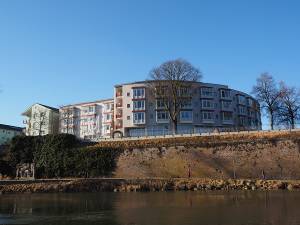For many retirees affordable senior housing is one of their main concerns, especially to those living on low fixed incomes.
Thankfully, the HUD 202 program makes affordable senior housing a reality as long as they meet some simple eligibility requirements.
Affordable Senior Housing Eligibility Requirements
If the person applying for senior housing assistance or their spouse is at least 62 years old they are able to proceed with the income eligibility check.
First, the senior’s adjusted gross income is calculated by subtracting any approved medical expenses from their current income.
Next, this amount is compared to a threshold based on the state and county of where they live. These numbers are periodically adjusted to reflect economic changes such as inflation and cost of living adjustments (COLA) and the HUD website always has the latest income guidelines available as a PDF file for downloading or you can use an interactive map to find the income levels for your area.
Finally, if they fall under the cut-off point they are eligible for senior subsidized housing and will only have to pay 30 percent of their AGI (adjusted gross income) towards rent and utilities.
It is important to note that all affordable senior housing properties comply with federal regulations that accept anyone who qualifies without regard for national origin, race, religion, color, disability or sex.
If you have applied for subsidized housing and feel you have been unfairly denied you need to file a complaint as soon as possible.
These government subsidized properties are built and run by many non-profit groups that received special HUD loans and HUD is not involved with the operation of the properties in any way.
There are some privately-funded senior housing programs but these are usually restricted to certain groups such as a specific religion and most people not involved with the group will not even be aware of these programs.
While the HUD subsidized programs do not pay for any additional services there are many places that have staff to help connect seniors with outside services such as transportation and meal deliveries.
Anyone looking for affordable senior housing for their loved one should check early to make sure there is either no or a short waiting list since the more desirable properties fill up fast.
It is also good to find out if there are any available services offered and if there is a cost associated with them.
Additionally, there are some communities that have residences for those with special needs like issues with mobility.
The elderly does not have to worry about finding affordable senior housing that is decent and safe no matter how little of an income they have thanks to HUD and other privately run subsidized housing programs.

 Households of the very aged renters, who are 80 years and older, comprise about a third of the very low-income elderly renters. Nearly half pay more than 50 percent of their incomes for housing. About one third live in central cities. Nearly two- thirds are women living alone.
Households of the very aged renters, who are 80 years and older, comprise about a third of the very low-income elderly renters. Nearly half pay more than 50 percent of their incomes for housing. About one third live in central cities. Nearly two- thirds are women living alone. Many of our elderly living primarily off of Social Security are in serious need of affordable housing and this is where
Many of our elderly living primarily off of Social Security are in serious need of affordable housing and this is where